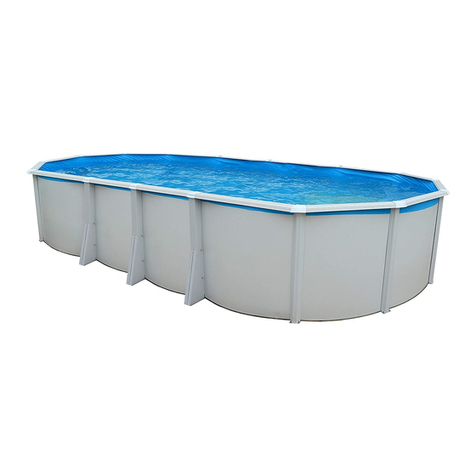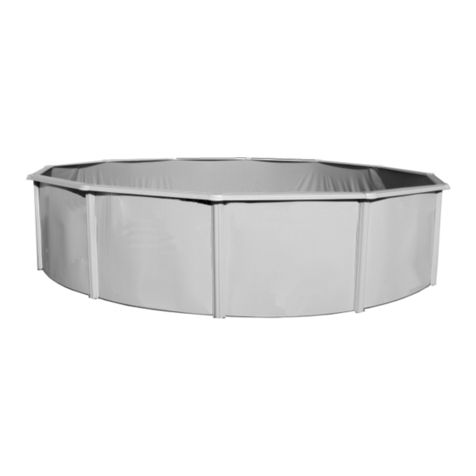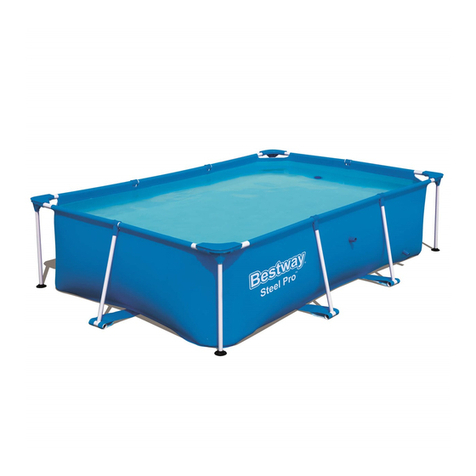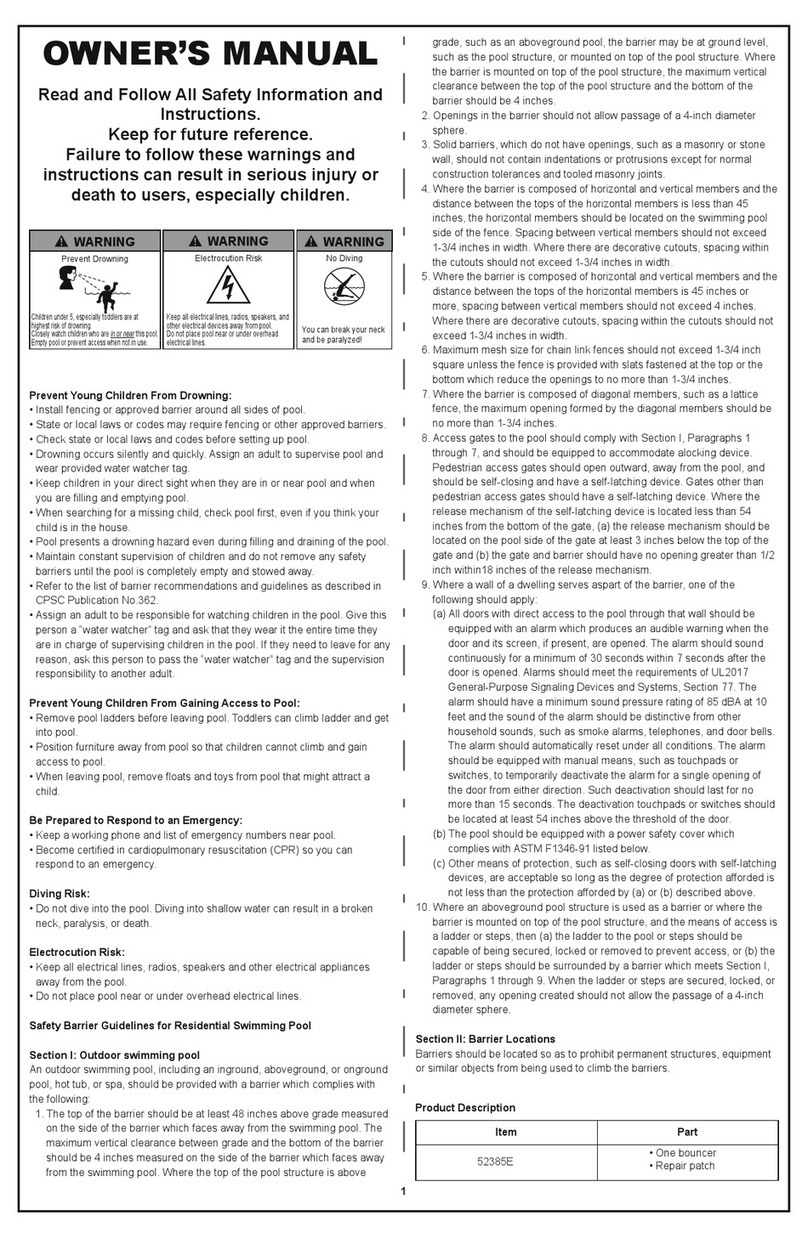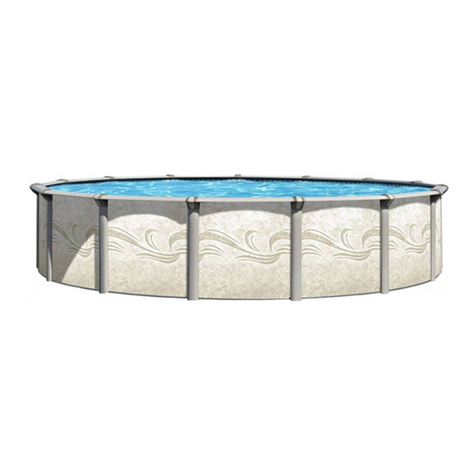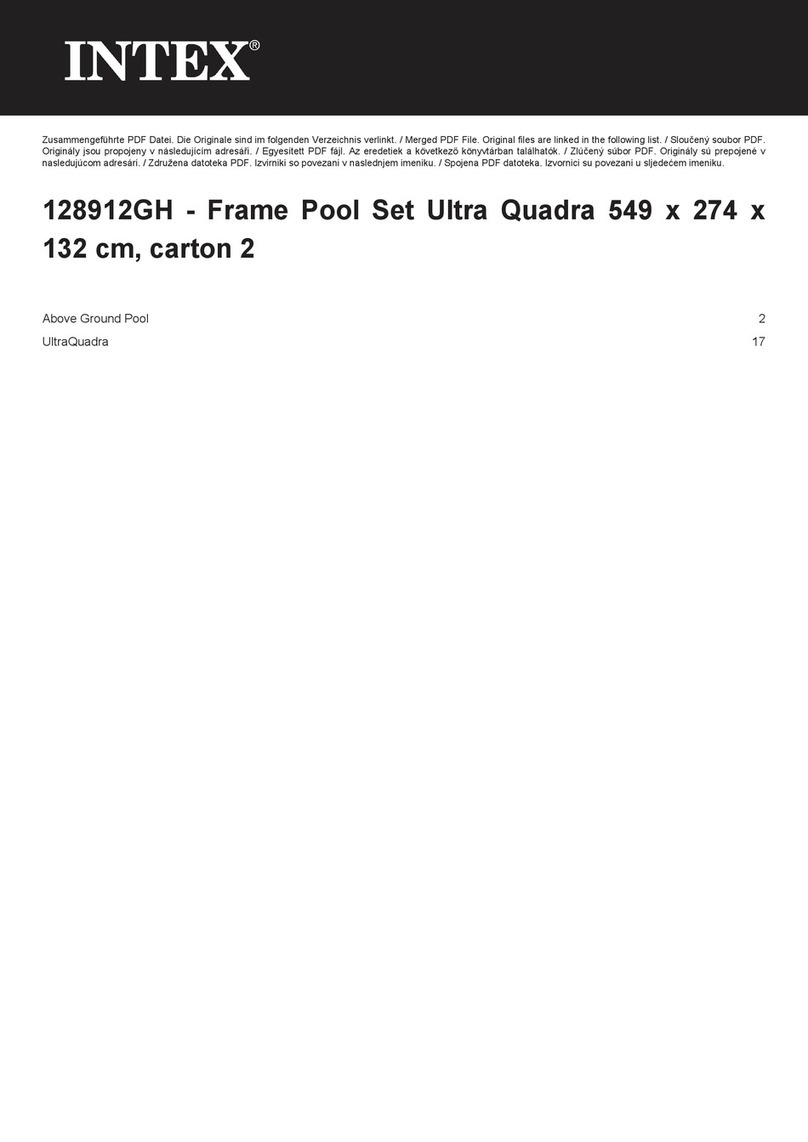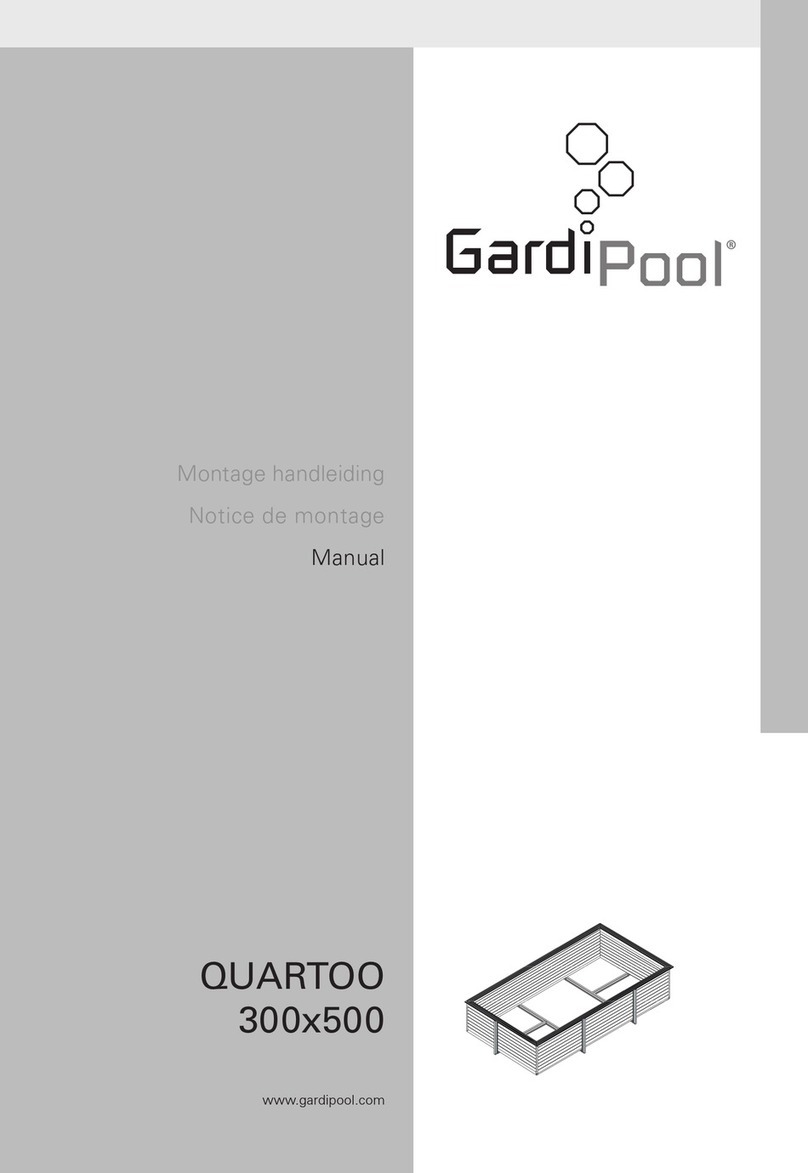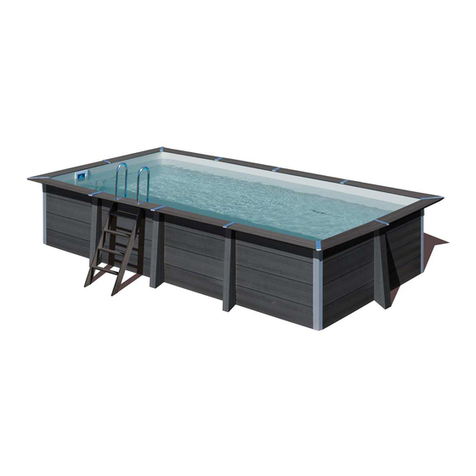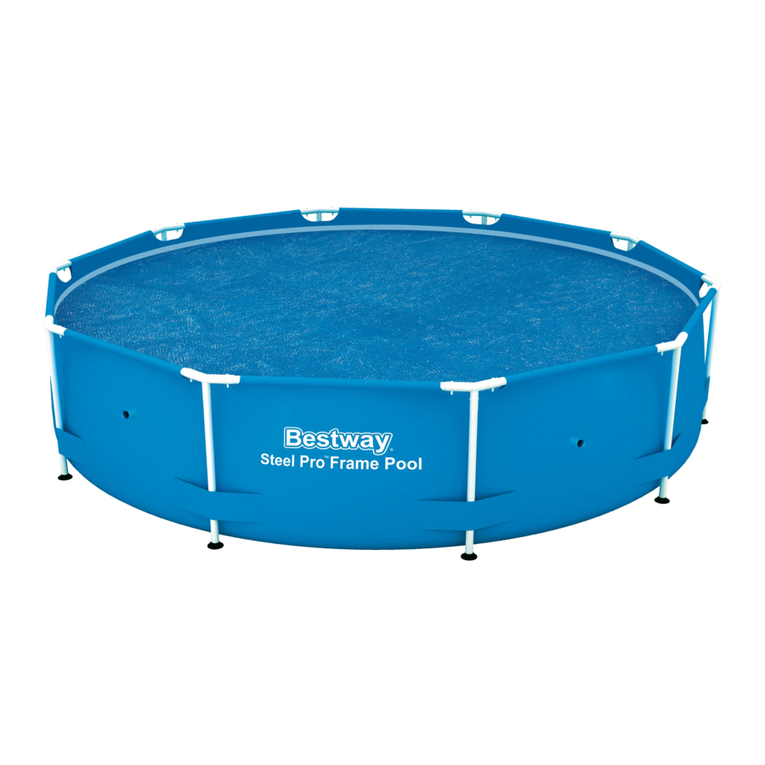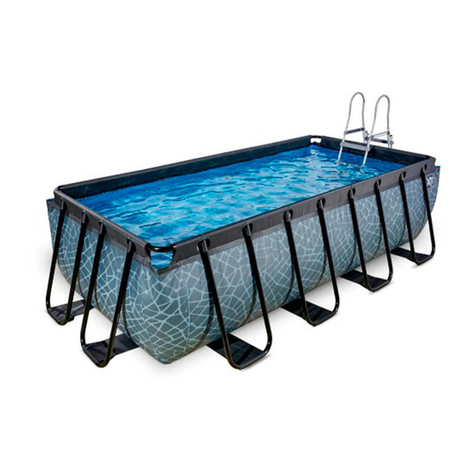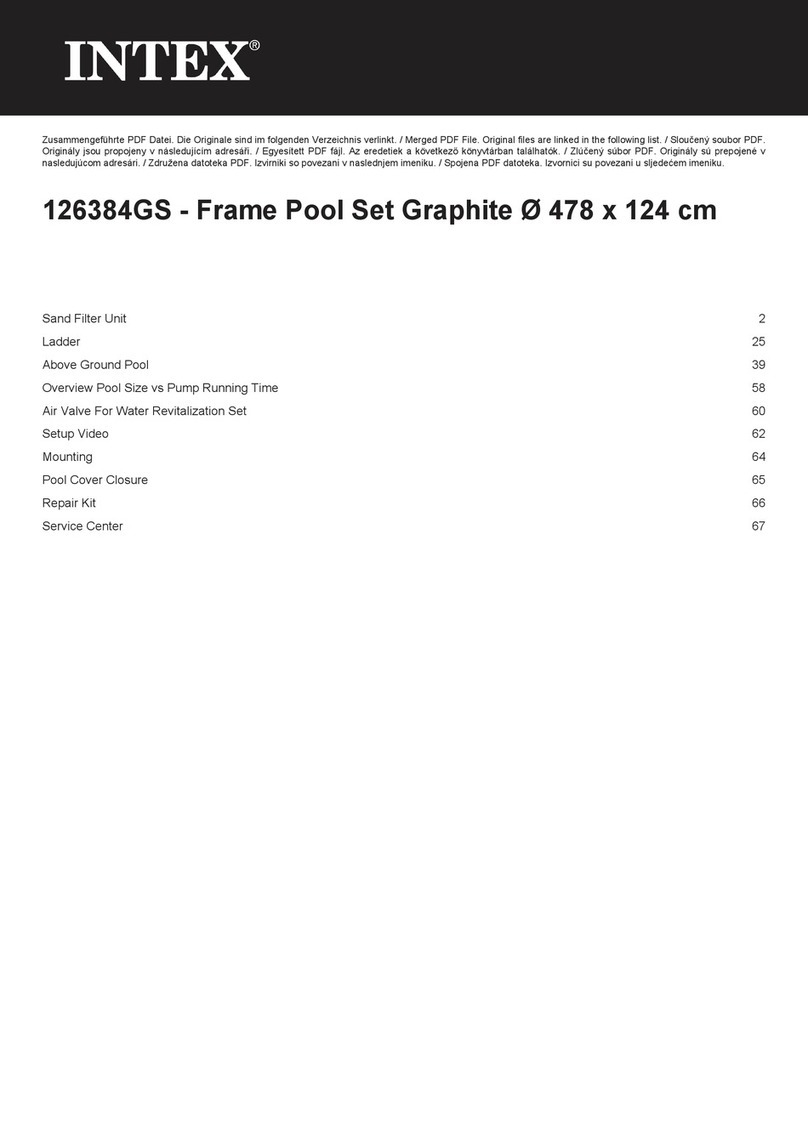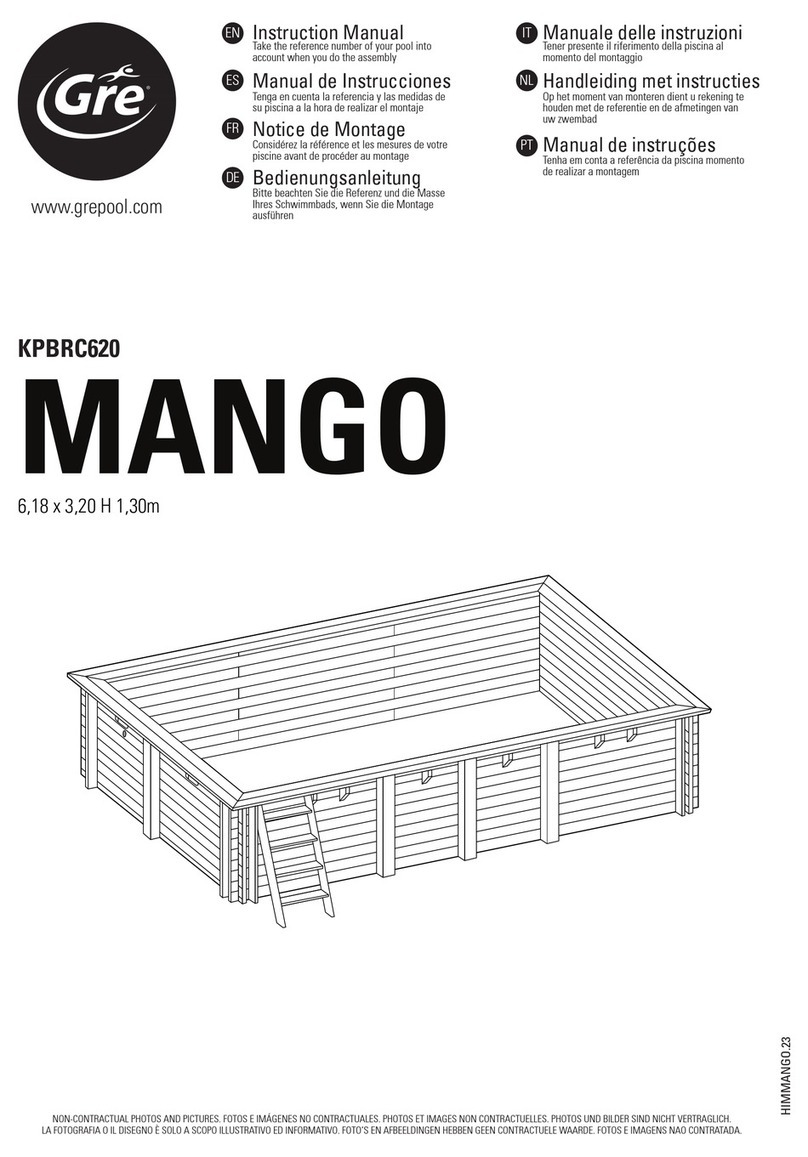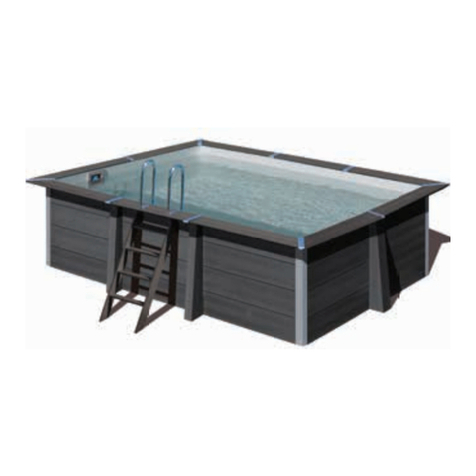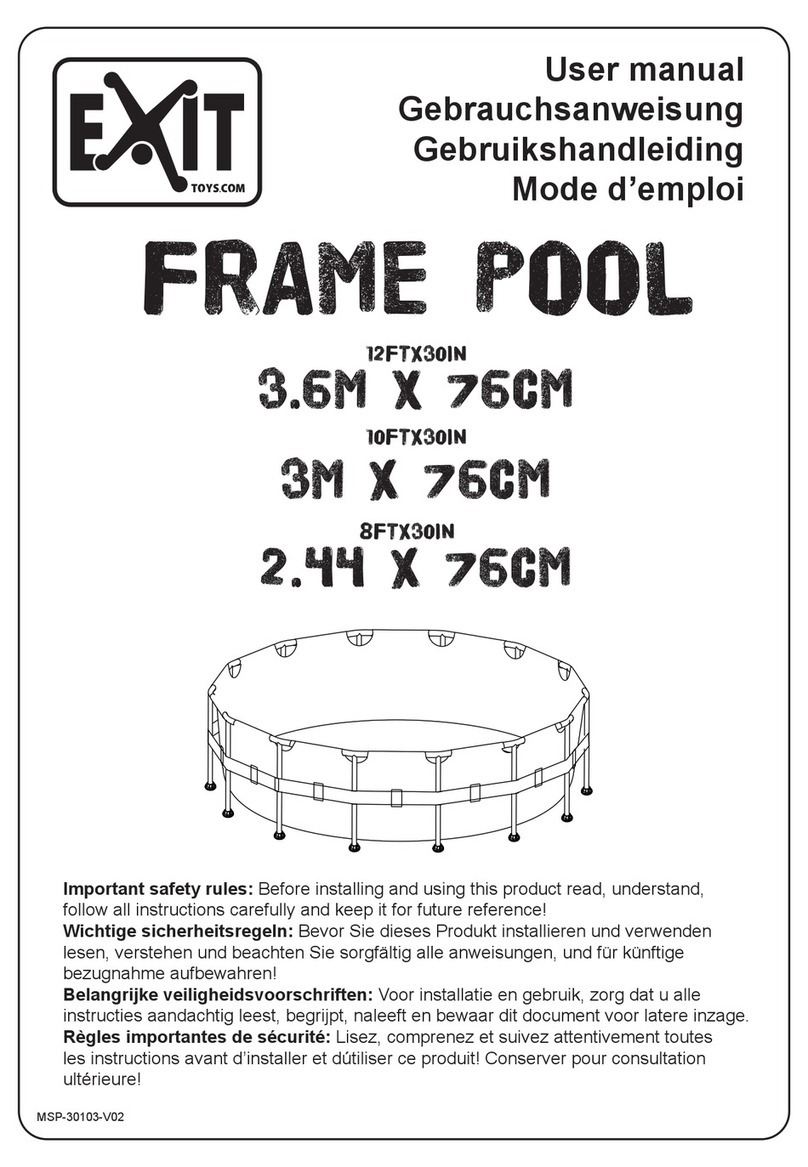TOI OVAL Series User manual

Desde/Since 1962
Pol. Ind. c/ Buitrera, s/n
Apdo. de correos, 10
46180 Benaguacil/Valencia
Tel. atención al cliente:
902 36 47 17
e
-mail:
S.P.V.:
www.torrenteindustrial.com

2
INDEX
1. SAFETY GUIDELINES -------------------------------------------------------------------------- p.3
2. DETERMINING THE INSTALLATION SITE FOR THE SWIMMING POOL ------- p.5
3. TOOLS ---------------------------------------------------------------------------------------------- p.6
4. COMPONENTS (ALSO, COLUMNS & BUTTRESSES PART LIST) --------------- p.7
5. PREPARE THE AREA BEFORE THE INSTALLATION -------------------------------- p.8
6. PREPARE THE STRAPS FOR THE BRACES -------------------------------------------- p.8
7. INSTALLATION OF THE BASE AND LOWER PLATE --------------------------------- p.9
8. INSTALLATION OF THE VERTICALS ------------------------------------------------------ p.9
9. INSTALLATION OF THE COLUMN STIFFENER --------------------------------------- p.10
10. ASSEMBLY OF THE POOL BASE (PCM)------------------------------------------------- p.10
11. ASSEMBLY OF THE STEEL WALL (CH) ------------------------------------------------ p.12
12. INSTALLATION OF THE LINER (L) ------------------------------------------------------- p.13
13. INSTALLATION OF THE UPPER PROTECTIVE SECTION (PL)------------------- p.14
14. INSTALLATION OF THE UPPER SECTION (PBS) ----------------------------------- p.14
15. ASSEMBLY OF THE VERTICAL SECTIONS (VER) ---------------------------------- p.14
16. ASSEMBLY OF THE HORIZONTAL PROFILES (HOR) ----------------------------- p.15
17. INSTALLING THE HUB CAPS (EMB / EMR) ------------------------------------------- p.16
18. INSTALLING THE RETURN VALVE ------------------------------------------------------ p.16
19. INSTALLING THE SKIMMER ---------------------------------------------------------------- p.17
20. LAST DETAILS ---------------------------------------------------------------------------------- p.18
21. SWIMMING POOL’S MAINTENANCE ----------------------------------------------------- p.18
22. CARE DURING WINTER MONTHS --------------------------------------------------------- p.20
23. TO EMPTY, DISASSEMBLE AND STORE YOUR POOL ---------------------------- p.20
24. GUARANTEE & CONDITIONS--------------------------------------------------------------- p.22
Thank you for selecting a TOI swimming pool. You have chosen a high quality swimming pool, produced according
to the most up to date technologies and the most strict norms of security.

3
ATTENTION: READ THESES INSTRUCTIONS CAREFULLY BEFORE PROCEEDING TO ASSEMBLE YOUR SWIMMING POOL.
REMIND ALL POOL USERS THAT THESE SAFETY INSTRUCTIONS MUST ALWAYS BE FOLLOWED-UP. KEEP THESE
INSTRUCTIONS FOR FUTURE CONSULTATIONS. ¡YOUR CHILDREN’S SAFETY DEPEND ON YOU! RISK IS HIGHER WHEN
CHILDREN ARE UNDER 5 YEARS OLD. ACCIDENTS CAN HAPPEN TO EVERYBODY SO IF INSTRUCTIONS ARE NOT FOLLOWED
MAY CAUSE HEALTH RISKS AND SPECIALLY IN CHILDREN!
1. SAFETY GUIDELINES
Remember that safety is the most important factor when installing the swimming pool. Safety must be given priority over any
decorative aspect. Do not lean, jump, sit, stand or walk on profiles. They have not been designed to that effect.
Do not dive or jump headfirst in your swimming pool, do not jump from a ladder or elsewhere. This pool is not deep enough to
dive without risk of accident. The self-adhesive sign “Unsupervised, your child in danger” must be placed close to or on your
pool. For replacement adhesives, please contact our factory.
Do not use your swimming pool when being under the effects of alcohol, medicines or drugs.
To avoid drowning and injuries, do not leave tables, chairs or other objects near the pool to prevent children from climbing into
the pool.
Do not install a slide on your swimming pool.
To avoid electrocution risk, do not manipulate electrical equipment near to your swimming pool or with a wet body. Make sure
that all electrical equipments are protected by a grounded switch.
When bathing, never use metallic or punching foot wear.
If your pool has a cover on, do not allow anybody, and specially small children, to walk or play on it.
Assign one entrance and exit for our swimming pool. This area must be kept totally clean. Remove all object that could hurt
barefooted people.
Do not make holes in your swimming pool wall to install lights or any other devices. It could result in serious injuries, inundation,
electrocution or property damage.
For more security, we recommend to install a 122 cms high fence or wall around your swimming pool made of a resistant
material. All access doors/gates should have a lock installed at least at 122 cms high in order to prevent small children from
opening them. If doors, windows and garden gates make part of the fence, make sure that they can be closed with a key or
bolt.
Do not use your swimming pool at night or when visibility is not good. The water of your swimming pool shoud be always kept
clean in order to see the bottom and appreciate its depth. Users should be capable to see that the pool is not deep enough to
dive. If you decide not to take into account this safety instruction, then it’s your responsibility to provide users the appropriate
instructions on the correct use of this product and supply sufficient light. For lighting recommendations, consult your local
licensed electrical contractor on the appropriate light so as to fulfil all local and national norms of electricity and other security
requirements.
If your pool is equipped with a ladder, then follow-up all safety guidelines and assembly instructions indicated in the manual.
A ladder must be used to get in and out of the swimming pool. When not in use, the ladder should always be removed and kept
in an inaccessible place.
In order to maintain its stability, the ladder should be placed on a solid, levelled base at all times. Only one person at the time
should be on the ladder.
Install the ladder where the entrance/exit of your swimming pool will be.
Never use your ladder for other aims. The pool ladder has not been developed for other applications.
If your swimming pool is equipped with a filter, make sure that the swimming pool is filled with water and your filter correctly
connected as indicated in the manual.
During the bathing season, the filter must work every day, long enough to renew all the water at least one time.
Attention: All filter systems fulfill normative of installation NF C 15-100. It stipulates that all electrical item that is to less than
3,50 mts from the swimming pool and freely accessible, must be fed on very low tension.12 volts.
All electrical item fed on 220 V must be place at least, at 3,50 mts from the pool’s edge. A permission of the manufacturer is
needed to modify any of the components of the filtration system.
Verify all parts of your pool on a frequent basis in order to detect possible failures and make sure all components are installed
correctly. Always replace components with original TOI spare parts.
This swimming pool has been designed for private use only. Do not use for commercial activities.
Avoid accidents and be prepared to react in case they occur!

4
SUPERVISE AND ACT
-Never leave a child alone and unsupervised.
-Assign one person to be responsible for the user’s safety.
-Increase supervision according to the number of pool users.
-Supply inflatable to those who do not know how to swim.
-Teach your children how to swim as early as possible.
-Wet your neck, arms and legs before going inside the water.
-Learn first aid techniques, specially those of application to children.
-Do not allow diving and jumping.
-Do not allow sprints or violent games near or inside your swimming pool.
-Children that cannot swim should not be allowed to enter the swimming pool without life jacket and without the company of an
expert swimmer.
-Do not leave toys inside or near the swimming pool.
-Keep water clean and healthy permanently.
-Store chemicals for water treatment our of children’s reach.
KEEP:
-Your telephone closes to the swimming pool in order not to interrupt supervision.
-Inflatables and pole near the pool.
IN ADDITION, WE RECOMMEND FOLLOWING A EQUIPMENT:
-Manual or automatic cover, correctly installed.
-Electronic device detecting passers-by and persons falling in the swimming pool. (This additional equipment won’t substitute
constant supervision, under no circumstances.
IN CASE OF ACCIDENT:
-Take child out of the water as quickly as possible.
-Call for help immediately and follow te instructions given.
-Replace wet garments by hot and dry ones.
MEMORIZE AND KEEP FIRST AID TELEPHONE NUMBER CLOSE TO THE POOL:
-Fire brigade.
-Ambulance, doctor…
RECOMMENDATIONS FOR THE ASSEMBLY OF YOUR SWIMMING POOL
1) Take your time and read the instructions carefully before starting to install the swimming pool. Follow all
the instructions.
2) This swimming pool has been designed to be easily installed. Final results will depend on your care and
attention while installing the pool. The effort and care that you put into the preparation of the foundations
can make a great difference in the life span of your swimming pool and its liner.
3) Check local laws and, if necessary, obtain the construction permits. Check local electrical and construction
laws concerning the installation of swimming pools above ground level.
4) Do not forget that your swimming pool is like a big tank. If the pool is too full, pressure may originate a
breach in the wall and cause inundation and important damages and injuries to people near the pool.
5) Check local laws and, if necessary, obtain the construction permits. Check local electrical and construction
laws concerning the installation of swimming pools above ground levelThis swimming pool contains a large
amount of water and a big weight. Take special care to avoid accidents. To calculate the approximate
weight of your pool, convert the capacity of liters of water, based on the equivalent of 1 kilo=1 liter.
6) Gather and check the tools and materials you will need to install the swimming pool.
7) We recommend that at least two adults assemble the pool.
8) Approximate time for assembly of the pool (ground leveling and filling with water excluded) is 3 hours.

5
2. DETERMINING THE INSTALLATION SITE FOR THE SWIMMING POOL
Take a look at your property to decide the ideal and the best site for the swimming pool.
The ground:
A large area is ideal. However, if a flat area, large enough for the swimming pool is not available, then choose an
area where minimum digging is required.
Under no circumstances, the swimming pool must be installed below ground level. This swimming pool must only
be installed above ground and on a hard, solid ground. The swimming pool must be installed near a drain or
sewage system to avoid flooding in case of breakage / leakage.
The swimming pool must be installed on a 100% plain and flat surface. Failure to observe this important safety
measure can cause damage and deformation to the liner and / or the metal sheet, resulting in injuries to those who
are near the swimming pool.
Never install this swimming pool inside a garage, or on a balcony, roof, terrace or any other surface that is not
completely flat and solid. The maximum weight that the installation site can support must be taken into
consideration.
Remove roots, grass and stones in the selected area, including those under the ground. The weight of the water
will compress these elements between the liner and the earth under the swimming pool, resulting in damages.
Grass left underneath the pool liner will rot and give of an unpleasant odor and stones and roots will damage the
pool liner.
Avoid installing your swimming pool on fertilized ground or on any ground that has recently been treated with oil-
based weed killers, chemicals or fertilizers. Avoid those areas where grass grows; it could go through the liner of
your swimming pool.
Do not install your swimming pool on: marshland, tar, gravel and wood.
A foundation made of leveled, solid and
very compact soil / earth is the best base for your swimming pool. Do not install your swimming pool on a fragile
earth or on a site that will not support the weight of the pool
Do not install your pool to close to your house, but in order to ensure maximum safety, install it where it can be
readily seen and watched from the house.
Yes
This manual suits for next models
1
Table of contents
Other TOI Swimming Pool manuals
